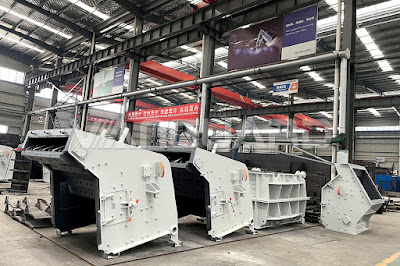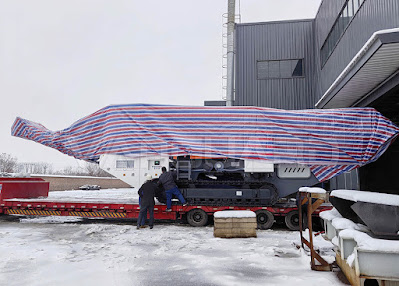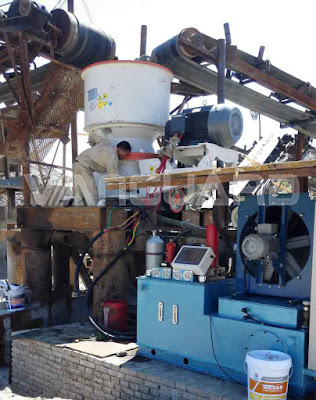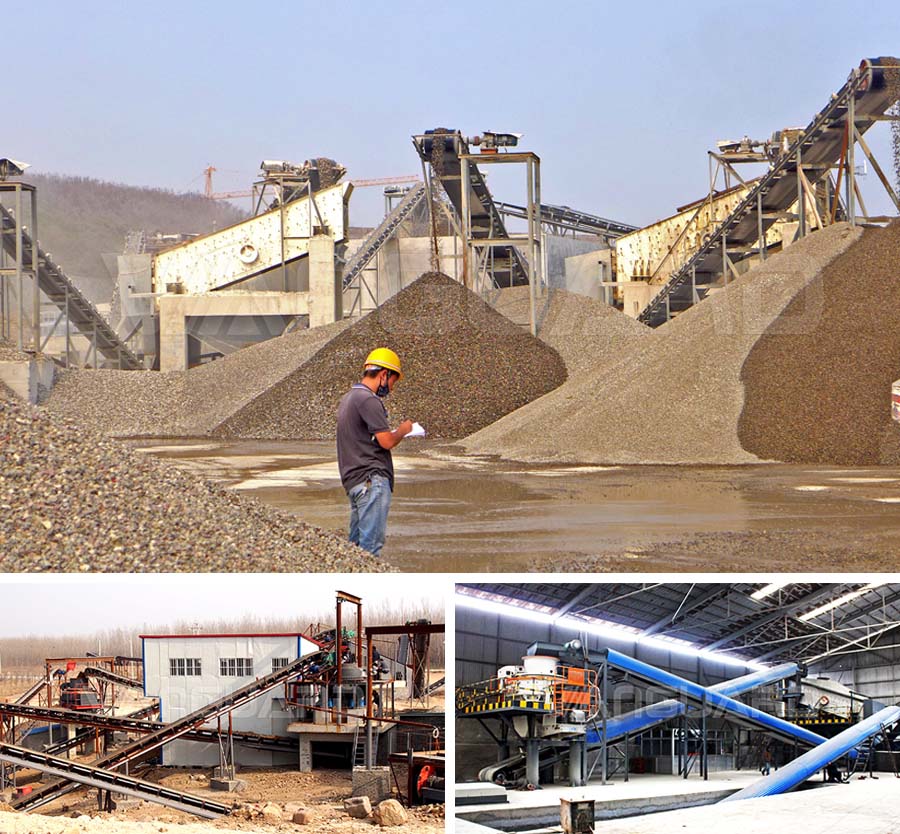As the core equipment in the production process, the crusher's stable operation is crucial to the entire mining operation. Especially in the cold winter, problems such as the solidification of lubricating oil, hardening and wear of lubricating parts, and difficulty in starting equipment frequently occur, which brings considerable trouble to mining production. This article aims to reveal to you the core maintenance strategies of mining crushers in low-temperature environments, ensuring that the equipment operates stably and efficiently in severe cold, and safeguarding mine production.
1. Selection of lubricating oil and solution to solidification problems
(1). Lubricating oil selection:
In low-temperature environments, low-temperature lubricating oil should be selected. Their viscosity changes less with temperature and has better fluidity at low temperatures. They can effectively prevent solidification and ensure that equipment is effectively lubricated and protected in low-temperature environments. Extend the service life of the equipment and improve the reliability and stability of the equipment. Common low-temperature lubricating oils include winter-type engine oil, grease, etc. In actual applications, appropriate low-temperature lubricating oil products are selected based on the specific working conditions, ambient temperature and requirements of the equipment.
(2). Solve the problem of lubricating oil solidification
1) Choose low-temperature lubricating oil to ensure that it still has good fluidity and lubrication performance in low-temperature environments;
2) During the operation of the equipment, the oil temperature adjustment device or preheating system is used to keep the lubricating oil temperature within an appropriate range to avoid solidification caused by too low oil temperature;
3) Regularly clean the oil and dust on the surface of the equipment and check the lubrication system regularly to prevent impurities and pollutants from entering the lubrication system, ensure smooth pipelines, and prevent lubricating oil from solidifying in the pipelines and causing blockage;
4) According to the usage of the equipment, replace the lubricating oil regularly. This can prevent the lubricating oil from aging, being contaminated or mixed with impurities, and maintain its good lubrication performance and fluidity.
2. Solve the hardening and wear problems of lubricating components
In low-temperature environments, the brittleness of materials increases, which can easily lead to hardening and wear of lubricating components, such as bearings, gears, bearing bushes, etc. This not only affects the normal operation of the equipment but may also cause malfunctions and even interrupt production. Therefore, we must attach great importance to the maintenance of lubricated components in low-temperature environments.
For the hardening and wear challenges of lubricated components, the following solutions may be considered:
(1). Lubrication and cooling: Ensure that the lubricating components of the equipment are fully lubricated during operation to reduce friction and wear. In addition, in low-temperature environments, the selection and supply of lubricating oil should be appropriately adjusted to ensure the lubrication effect.
(2). Regular maintenance and replacement: Regular inspection, cleaning and maintenance of lubricating components. According to the usage and wear degree, damaged or severely worn lubricating components should be replaced in time to ensure the normal operation of the equipment. At the same time, sufficient spare parts should be stored in advance to ensure timely supply when lubricating components need to be replaced. In addition, according to the operating conditions of the equipment, promptly adjust the position of the lubricating parts and the tightness of the fasteners to ensure that they are in good working condition.
(3). Choose high-quality products and services: Choosing strictly verified lubricating component products can provide stable support for mining equipment under harsh conditions and ensure production continuity and stability. At the same time, choosing a professional mining equipment maintenance and maintenance service team can provide comprehensive technical support and guarantee.
3. Solving difficulties in starting equipment
In low-temperature environments, mining equipment often faces huge challenges during the start-up phase, mainly due to several key factors: the significant increase in lubricating oil viscosity and the too-low temperature of the motor, resulting in a significant increase in resistance when the equipment is started, thus causing It is difficult for the equipment to start and operate normally, which not only affects production efficiency and equipment performance but may also increase maintenance costs and safety risks.
The following are several solutions to the problem of difficulty in starting mining equipment in low-temperature environments:
(1). Select lubricating oil suitable for low-temperature environments to ensure that key parts of the equipment are well lubricated and effectively reduce the friction resistance of key parts of the equipment, thereby ensuring smooth start-up and operation of the equipment;
(2). In a low-temperature environment, too low a temperature of the motor may cause startup failure. The motor can be preheated in advance to reach a suitable operating temperature to ensure that the equipment can start smoothly.
(3). Install heating equipment or use insulation measures to increase the overall temperature of the equipment and reduce starting resistance. These measures will help reduce the viscosity of the lubricating oil and ensure that the motor operates at a suitable temperature.
Facing the challenge of low-temperature environments, mining equipment will always encounter many problems, but as long as we adopt professional solutions, we can easily solve these problems. Through professional and reasonable operation and maintenance, we ensure that mining equipment can successfully cope with various extreme conditions and maintain stable and efficient operation, providing solid technical support and guaranteeing the continuous and safe production of mines.









































